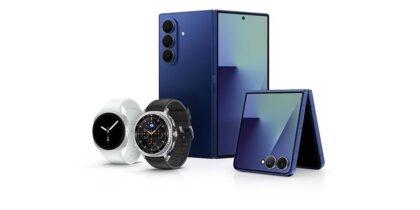The Next Mobile Economy is an open, yet secure arena in which more collaboration and customization will take place. This will be instrumental in the world of financial services. Consumer services firms in finance face heightened compliance requirements and significant cybersecurity risks, which can slow digital transformation.
Leaders at banks and investment firms realize change is inevitable, but may struggle to achieve an agile posture in an environment of regulatory pressures, mobile security risks, and fast-changing technological opportunities.
Samsung Knox has a widely accepted solution for devices deployed among some of the top banks in the United States, as attendees learned at the Gartner Security & Risk Management Summit, June 4-7 in National Harbor, Maryland. By simplifying the complexities of secure innovation in the financial services industry, a smarter approach to enterprise mobility management can enable banks to capture the full potential of the Next Mobile Economy.
Financial Services CIOs Realize Change Isn’t Optional
The 2018 Gartner CIO Agenda Survey revealed decision-makers at banking and investment firms are in cautious pursuit of technologies to replace existing business models. Pete Redshaw, Managing Vice President at Gartner, says banks “recognize that the status quo is not sustainable, and they must disrupt themselves before it is done to them.”
According to the same report, mobility and mobile applications were ranked in the top three “tech to win” by 11 percent of respondents, with nine percent anticipating near-term spending on mobile technologies. As traditional financial services firms compete against disruptive startups for customers, having an enhanced mobile capability is likely a sound business strategy.
However, banks also have a built-in advantage against their disruptive competitors. Data cited in The Financial Brand revealed that while today’s consumers are wary of financial institutions, they believe banks and credit unions are secure. A security-first approach to transformation in financial services could maintain customer loyalty.
Samsung Knox for In-Branch Engagement
Some of the most exciting use cases of Samsung Knox address the question of “how do we change the way banks are doing business in branches?” said Nick Rea, Vice President of Mobility Innovations at Samsung Electronics America. Despite evolving digital behaviors, incorporating mobile innovation into the branch experience presents an opportunity for meaningful customer engagement.
Across age groups and demographics, 77 percent of consumers prefer face-to-face engagement for “substantive matters,” per Celent’s report, Delivering Excellent Customer Service. Just 21 percent of mobile banking users visited a branch because their mobile application lacked the capability to do an intended task, such as apply for a loan. More commonly, mobile-engaged customers chose to visit a branch because they preferred interacting with a banker (54 percent) or were more comfortable with that approach (35 percent).
Creating Personalized Customer Experiences
Get your free guide to when, how and why consumers want face-to-face interaction with their banks. Download Now
Rea cites capabilities such as Knox Configure as key to providing the sort of omnichannel experiences which can create exceptional customer engagement in the branch. With easy tools for provision and customization at scale, IT administrators can create self-service kiosks for bank customers to explore solutions on tablets.
When the customer is ready to engage with a banker about a loan application, investments or other products, the tablet can be integrated with other mobile tools to create a seamless, fully-personalized experience. Rea calls this concept “B2B2C,” a reference to how continuous mobile integration provides value to both customers and branch staff.
Simplifying BYOD for Financial Services
Despite significant regulatory pressures, Rea states financial services firms are driving value with Knox as a tool to manage BYOD programs with “as little complexity as possible,” while maintaining support for multiple platforms. While Rea acknowledges the value of BYOD as a tool for driving cost-savings and employee satisfaction, not all EMM solutions are created equal.
As Samsung’s Vice President of Sales Keith Fuentes highlights, it’s critical for financial services to consider more than just perimeter-level security around employee-owned mobile devices. “Anchored in the hardware and from chip-up, Samsung Knox is integrated throughout the software layers to separate data and constantly check the integrity of the device,” Fuentes said.
Simplicity in BYOD means more than just peace of mind via “basement-level security,” real-time monitoring from the moment the device is powered on, and support for multiple platforms. With convenient options for secure deployment in a BYOD environment, IT administrators can create and scale purpose-built user roles for every aspect of their workforce, based on security and access needs. Depending on a customer’s requirements for data access and seniority, IT administrators can enable container-only mode, enable biometric authentication, create barriers between work and personal data, and remotely manage the mobile device to avoid security vulnerabilities.
As leaders in Financial Services consider how to capture the potential of the next mobile economy, the right solutions for digital transformation support secure innovation for both customer and employee-focused use cases. With Knox, IT leaders can ease complex compliance requirements, enable personalized and engaging customer experiences, and simplify secure employee mobile UX.
Ensure devices are compliant and sensitive data remains protected with Samsung’s range of financial security solutions.







